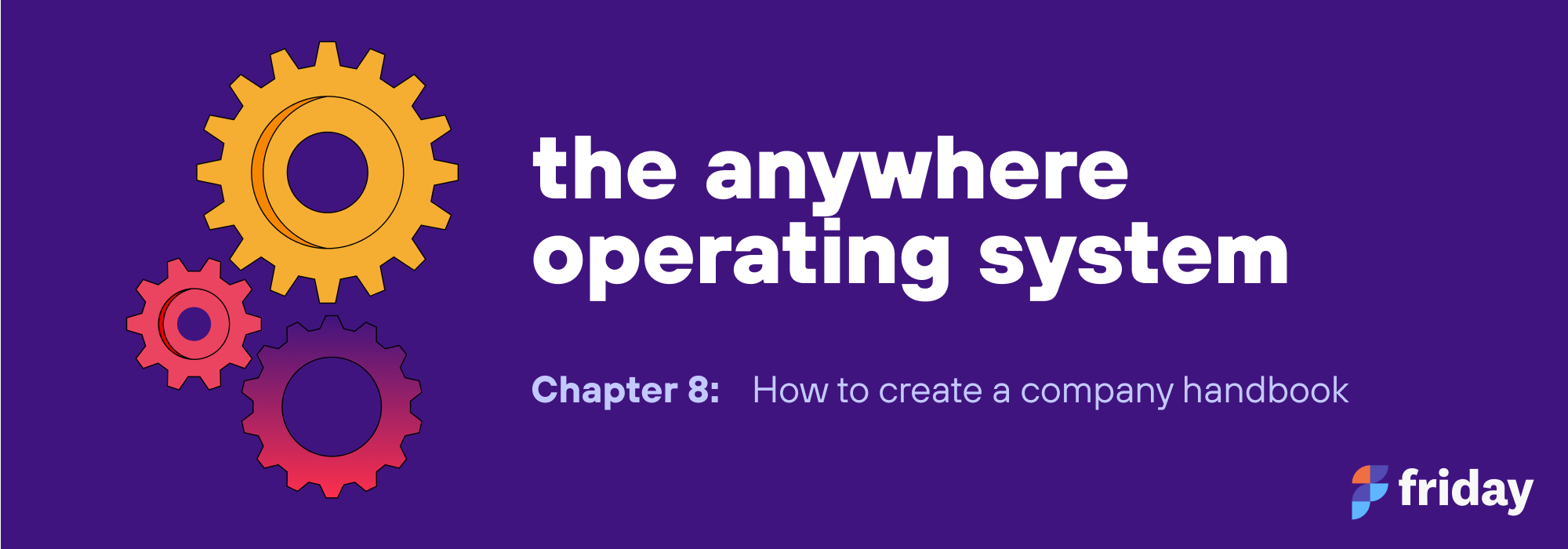Chapter 7: How to go async-first
One question I hear all the time from leaders is, “how can I shift my company to a remote-first model?” It’s easy to talk about, but it’s much more difficult to create habits and workflows to operationalize these principles.
In the rest of this chapter, I’m going to share specific workflows and workflow apps to help you shift away from the real-time meetings and never ending Zoom calls towards a more asynchronous or remote-first way of working.
1. Recurring meetings
The first way to go async-first is to improve the effectiveness of recurring meetings, like your weekly team meetings or all-hands meetings.
How it works:
- Ask your team to share structured, written updates before the meeting
- Show up to the meeting with updates out of the way, which saves ~20 minutes
- Use the written updates as a foundation for discussion. Converge around shared meaning and resolve blockers
- Take notes and share a recap asynchronously with the attendees or other stakeholders who were unable to attend
This topic is so important we’ve written an entire chapter on it (see - Chapter 9: How to cut your meetings in half).
2. Proposals
Now, imagine a project proposal meeting. If you show up to this meeting without enough context, the meeting will be an epic waste of time. Participants will struggle to understand everything in real-time, especially for complex topics.
On the other hand, you could:
- Share the proposal in writing before the meeting, collecting initial thoughts and high-level reactions asynchronously.
- Discuss the written proposal in a meeting, so the entire team is aligned and on the same page
- When the proposal is approved, share out action items and next steps asynchronously in a follow-up email
For example, Amazon is known for requiring that employees write proposals in a 6-page memo format. At the beginning of the meeting, attendees read the memo in silence before discussing it as a group. This workflow helps ensure that everyone has necessary context, which kickstarts better discussion and makes the meeting more effective.
3. Meeting notes
Another workflow worth trying is to record conversations on Zoom using a tool like Grain.co. You can have a real-time, synchronous conversation with your customers over video and record the conversation so it persists and can be viewed later. You should also take recap notes and summarize the discussion to help communication scale beyond the meeting attendees.
4. Company announcements
Now consider a company-wide announcement. Leaders may share an announcement in a staff meeting, but oftentimes this is quickly forgotten or buried in a random PowerPoint that no one can find.
A simple asynchronous workflow could be to aggregate the company announcements in a written log, so current and future employees can easily review the important announcements that have been made over time. This creates a steady stream of the most important news at the company.
5. Weekly note from the CEO
Another effective asynchronous workflow I’ve seen from leaders is to share an end of week recap, with sections like:
- What’s top of mind
- An update on performance and key metrics
- Other updates
Many leaders will use Slack or email, but I’d recommend against it. There’s a lot of noise and competition for attention in these channels, which means that it’s unlikely that people will read it. Congratulations, you have officially wasted your time!
I recommend setting up a dedicated space (like an internal blog) that aggregates these posts and provides analytics into how many employees are reading the updates. Additionally, these posts are useful context for new hires, which is why you should keep a running log that can be referenced over time.
6. New hire introductions
Speaking of new hires, I’ve seen many organizations send welcome emails or chat messages when a new hire starts. While this is better than nothing, the announcement is lost and inaccessible for future hires.
Instead, you should have new hires answer questions asynchronously, such as:
- What’s one fun fact about you?
- What gives you energy at work?
- What do you enjoy doing outside of work?
Each person at your company should have their own dedicated profile, which displays this information for existing employees and future hires.
In Conclusion
Making the shift to async-first communication is the most important organizational change you and your team can make. The workflows in this chapter are how you do it. It’s worth your time to invest in the right tools and processes to make this easy for everyone to do. We'll discuss these ideas in more detail in future chapters.
Want to keep reading? In the next chapter we share how you can setup your company handbook.

